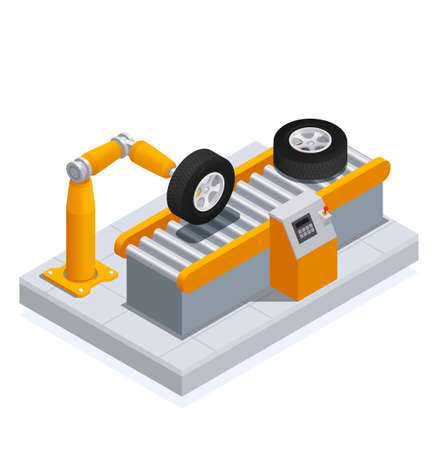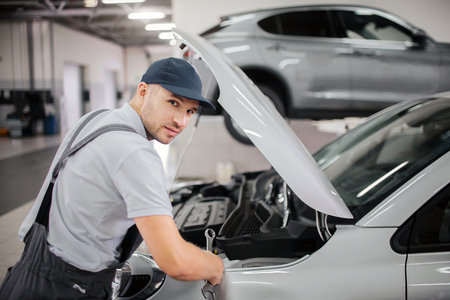1. Introduction to Vacuum Leaks
Understanding vacuum leaks is essential for keeping your engine running smoothly. In this section, well cover what vacuum leaks are, how they impact engine performance, and the symptoms you should watch for.
What Are Vacuum Leaks?
A vacuum leak occurs when unmetered air enters the engine, disrupting the ideal air-fuel mixture. Your engine relies on a carefully balanced vacuum system to regulate airflow, control sensors, and ensure efficient combustion.
How Do Vacuum Leaks Affect Engine Performance?
When extra air enters the engine without passing through the throttle body or being measured by sensors, it throws off the air-fuel ratio. This can lead to various performance issues, including rough idling, loss of power, and increased fuel consumption.
Common Symptoms of a Vacuum Leak
If your vehicle has a vacuum leak, you may notice one or more of the following symptoms:
| Symptom | Description |
|---|---|
| Rough Idle | The engine may shake or run unevenly when idling. |
| Check Engine Light | The ECU may detect an incorrect air-fuel mixture and trigger a warning. |
| Loss of Power | You might notice sluggish acceleration and an overall lack of engine performance. |
| Hissing Sound | A distinct hissing noise under the hood could indicate air is escaping from a vacuum hose. |
| Stalling | The engine may shut off unexpectedly, especially at low speeds or when stopping. |
| Poor Fuel Economy | With an incorrect air-fuel mixture, the engine may consume more fuel than necessary. |
Why It’s Important to Fix Vacuum Leaks
Ignoring a vacuum leak can lead to further engine problems, increased emissions, and reduced fuel efficiency. Addressing this issue early can save you from expensive repairs down the road.
2. Common Causes of Vacuum Leaks
Vacuum leaks can come from several different sources in your engine. When unmetered air enters the system, it can cause rough idling, poor performance, and even engine stalling. Below are some of the most common culprits behind vacuum leaks and what to watch for.
Cracked or Disconnected Vacuum Hoses
One of the most frequent causes of vacuum leaks is damaged hoses. Over time, rubber vacuum hoses can become brittle, crack, or detach due to heat and engine vibrations. This allows air to enter where it shouldnt.
Signs of a Faulty Vacuum Hose:
- Hissing sounds from the engine bay
- Rough idling or hesitation
- Check engine light with code P0171 or P0174 (lean fuel mixture)
Worn or Faulty Intake Manifold Gaskets
The intake manifold gasket seals the connection between the intake manifold and the engine. If it wears out or becomes damaged, unwanted air leaks into the system, throwing off the air-fuel mixture.
Common Symptoms:
- Engine misfires
- Decreased fuel efficiency
- Unstable engine idle
Cracked or Damaged Intake Manifold
If the intake manifold itself has cracks, air can seep in, leading to vacuum leaks and performance issues. Plastic intake manifolds are especially prone to this problem due to heat cycles.
How to Identify Intake Manifold Issues:
| Symptom | Possible Cause |
|---|---|
| Rough idle | Air leaking into the intake system |
| Whistling noise | Crack in the manifold |
| Loss of power | Unmetered air affecting performance |
Faulty Vacuum-Controlled Components
Many systems in modern vehicles operate using vacuum, such as the brake booster, PCV valve, and HVAC controls. A malfunction in any of these components can cause a vacuum leak.
Common Problem Areas:
- Brake booster diaphragm leaks (hard brake pedal)
- PCV valve stuck open (oil consumption and rough idle)
- HVAC system not switching airflow properly
Loose or Defective Throttle Body or EGR Valve Gaskets
Seals around the throttle body or EGR valve can wear over time, leading to vacuum leaks. Replacing faulty gaskets can eliminate these issues.
Warning Signs:
- Unstable idle or stalling
- Check engine light for air/fuel mixture issues
- Increased emissions

3. How to Diagnose a Vacuum Leak
Finding a vacuum leak in your engine can seem tricky, but with the right steps, you can pinpoint the issue and get it fixed. Below are some effective ways to diagnose a vacuum leak in your vehicle.
Step 1: Perform a Visual Inspection
The first step in diagnosing a vacuum leak is a thorough visual inspection. This method can help you catch obvious problems before using more advanced tools.
Check for These Common Issues:
| Possible Issue | What to Look For |
|---|---|
| Cracked or Loose Hoses | Inspect all vacuum hoses for cracks, tears, or loose connections. |
| Disconnected Hoses | Ensure all vacuum lines are properly connected to their fittings. |
| Broken Vacuum Fittings | Check plastic connectors and fittings for any signs of damage. |
| Signs of Wear | Look for brittle or hardened hoses, which can indicate aging rubber. |
Step 2: Use a Smoke Machine
A smoke test is one of the most effective ways to detect a vacuum leak. If you have access to a smoke machine, follow these steps:
How to Perform a Smoke Test:
- Turn off the engine and let it cool down.
- Connect the smoke machine to a vacuum line (such as the intake manifold or brake booster).
- Turn on the smoke machine and allow smoke to flow through the system.
- Watch for smoke escaping from any cracked hoses, gaskets, or seals.
- Once leaks are located, mark them for repair.
Step 3: Try the Spray Test
If you don’t have a smoke machine, the spray test is a simple alternative. This method involves using carburetor cleaner, brake cleaner, or an unlit propane torch.
How to Conduct the Spray Test:
- Start your engine and let it idle.
- Lightly spray small amounts of carb cleaner or brake cleaner around suspected leak areas.
- Listen for a change in engine RPM. If the idle fluctuates when spraying a certain area, you may have found the vacuum leak.
- If using an unlit propane torch, move the nozzle around suspected locations and listen for a change in RPM.
By following these steps, you can diagnose a vacuum leak with confidence and take the necessary steps to repair it.
4. Repairing Vacuum Leaks
Once youve identified a vacuum leak in your engine, its time to fix the issue. Proper repair will restore engine performance and prevent further complications. Here are some guidelines for repairing vacuum leaks.
Replacing Damaged Vacuum Hoses
Vacuum hoses are a common source of leaks. Over time, they can crack, harden, or even collapse. Follow these steps to replace damaged hoses:
- Identify the damaged hose and note its length and diameter.
- Purchase a replacement hose with the same size and material type.
- Remove the old hose by gently pulling it off its connections.
- Install the new hose securely, making sure there are no bends or kinks.
- Double-check the connections and ensure they are snug and airtight.
Sealing Gasket Issues
Gaskets create a seal between engine components, and if they fail, they can cause vacuum leaks. Key areas to check include the intake manifold and throttle body gaskets.
Steps to Replace a Faulty Gasket
- Carefully remove the component with the leaking gasket.
- Clean the surfaces to remove old gasket material and debris.
- Install a new gasket and apply the recommended torque when tightening the bolts.
- Inspect for leaks and confirm a proper seal.
Tightening Loose Air and Vacuum Connections
Loose vacuum connections can lead to unnoticed air leaks. Regular inspection and tightening of connections can prevent vacuum leaks from developing.
| Component | How to Secure |
|---|---|
| Vacuum Hoses | Push hoses firmly onto fittings and use hose clamps if necessary. |
| Intake Manifold | Tighten bolts evenly in a crisscross pattern to ensure a proper seal. |
| Throttle Body | Check and tighten mounting bolts and hose connections. |
Testing After Repairs
After fixing the vacuum leak, its essential to test your engine to confirm the problem is resolved. Start the engine and listen for any new hissing sounds. You can also use a smoke test or spray method to verify that all leaks have been sealed. If the engine runs smoothly without erratic idling or hesitation, your repair was successful.
5. Preventing Future Vacuum Leaks
Preventing vacuum leaks in your engine starts with regular maintenance and proper inspections. A well-maintained engine is less likely to develop leaks, ensuring smooth performance and fuel efficiency. Here are some key tips to help you keep your engine in top shape.
Regular Maintenance
Routine maintenance is crucial for preventing vacuum leaks. Follow these maintenance steps:
- Check and replace vacuum hoses periodically, even if they don’t appear damaged.
- Use high-quality hoses and clamps to ensure a tight seal.
- Perform regular oil changes to prevent sludge buildup that could affect vacuum lines.
- Inspect the intake manifold and gaskets during tune-ups.
Proper Inspections
Regularly inspecting your engine components can help catch potential vacuum leaks before they become major issues.
What to Inspect
| Component | Inspection Frequency | Signs of Wear |
|---|---|---|
| Vacuum Hoses | Every Oil Change | Cracks, Hardening, or Loose Fittings |
| Intake Manifold Gasket | Every Tune-Up | Oil Leaks or Whistling Sounds |
| PCV Valve | Every 30,000 Miles | Engine Idling Issues or Excessive Oil Consumption |
| Throttle Body & Gaskets | Every 50,000 Miles | Irregular Idle or Vacuum Leaks |
Best Practices to Prevent Vacuum Leaks
Follow these best practices to ensure your engine stays free of vacuum leaks:
- Use manufacturer-approved replacement parts to maintain proper vacuum pressure.
- Ensure all hose connections are properly tightened and seated.
- Avoid using excessive force when installing vacuum hoses to prevent damage.
- Keep the engine bay clean to prevent dirt and debris from interfering with seals.
By staying proactive with maintenance, inspections, and best practices, you can prevent vacuum leaks and keep your engine running efficiently.
